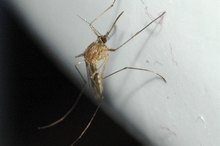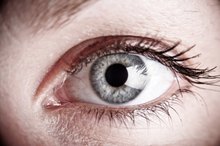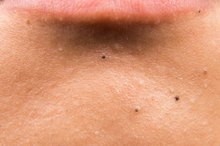Dark Pigmentation Around My Mouth
Whether it's an overabundance of freckles and spots or a mustache-like line across your upper lip, dark pigmentation around your mouth can make you self-conscious about your smile. If artful concealer and foundation aren't enough to hide your dark spots, you may be ready to try other measures to lighten up the skin around your mouth.
Warning
If you have dark spots, patches or areas around your mouth, it's a good idea to see a dermatologist who can help you determine the cause and best treatment for your hyperpigmentation and rule out the possibility of skin cancer.
Causes
Potential Causes of a Dark Upper Lip
Learn More
Dark pigmentation around your mouth can have three different causes, dermatologist Dennis Gross explains in "Elle" magazine 1. Dark circles of pigmentation--also known as age spots or liver spots--appear as a result of sun damage over time. Uneven dark splotches, patches and spots are caused by fluctuating hormones and often appear during periods of hormonal upheaval, like pregnancy and menopause. If a dark spot shows up in a place where you've popped a pimple or burned yourself with a curling iron, it's likely post-inflammatory hyperpigmentation, or a dark mark caused by a previous injury.
- Dark pigmentation around your mouth can have three different causes, dermatologist Dennis Gross explains in "Elle" magazine 1.
- Uneven dark splotches, patches and spots are caused by fluctuating hormones and often appear during periods of hormonal upheaval, like pregnancy and menopause.
Considerations
If your dark pigmentation only recently appeared around your mouth, there's a good chance you can treat it effectively with exfoliating scrubs and products, Washington, D.C.-based dermatologist Eliot Battle says in "O, The Oprah Magazine." Exfoliating treatments rub away the topmost layer of skin, revealing undamaged skin beneath. If your pigmentation is a long-term issue, the damage is probably deep beneath your skin and you'll need more invasive treatments to fade it, Battle says.
Prevention/Solution
How to Get Rid of Acne Scars and Big Pores
Learn More
For recent dark pigmentation, a combination of at-home exfoliating scubs, topical retinol and monthly chemical peels at your dermatologist's office can significantly lighten up dark spots within two months, according to Battle. Laser treatments can lighten more serious dark spots--Battle recommends intense pulsed light for fair-skinned people and fractional nonablative lasers for people with darker skin. And bleaching creams that contain hydroquinone can improve the appearance of most dark patches, Kansas City dermatologist Audrey Kunin says in in "Elle" magazine 1.
- For recent dark pigmentation, a combination of at-home exfoliating scubs, topical retinol and monthly chemical peels at your dermatologist's office can significantly lighten up dark spots within two months, according to Battle.
- And bleaching creams that contain hydroquinone can improve the appearance of most dark patches, Kansas City dermatologist Audrey Kunin says in in "Elle" magazine 1.
Expert Insight
If you're treating dark pigmentation around your mouth, don't forget to apply sunscreen every day, too, Battle warns. Exposure to sun will undo any dark spot fading, make existing discoloration even darker and may cause new areas of dark pigmentation to form. For best results, opt for a broad-spectrum sunscreen that doesn't contain chemical blockers like avobenzone or oxybenzone, Jennifer Linder, a dermatologist in Scottsdale, Arizona, recommends in "Elle" magazine 1.
Related Articles
References
- Elle Magazine: Dermatologist Tips for Uneven Skin Tone
- O Magazine: The Skin Fixers: 6 Dermatologists Prescribe Solutions to Your Complexion Concerns
- American Academy of Dermatology. Variety of Options Available to Treat Pigmentation Problems. February 5, 2013. https://www.aad.org/media/news-releases/variety-of-options-available-to-treat-pigmentation-problems
- Tomecki J, Woodhouse G. Common Benign Growths. Cleveland Clinic Center for Continuing Education. http://www.clevelandclinicmeded.com/medicalpubs/diseasemanagement/dermatology/common-benign-growths/
- Scarcella G, Dethlefsen MW, Nielsen MCE. Treatment of solar lentigines using a combination of picosecond laser and biophotonic treatment. Clin Case Rep. 2018;6(9):1868-1870. doi:10.1002/ccr3.1749
- Scherer D, Kumar R. Genetics of pigmentation in skin cancer--a review. Mutat Res. 2010;705(2):141-53. doi:10.1016/j.mrrev.2010.06.002
- Bastiaens M, Hoefnagel J, Westendorp R, Vermeer BJ, Bouwes bavinck JN. Solar lentigines are strongly related to sun exposure in contrast to ephelides. Pigment Cell Res. 2004;17(3):225-9. doi:10.1111/j.1600-0749.2004.00131.x
- Davis EC, Callender VD. Postinflammatory hyperpigmentation: a review of the epidemiology, clinical features, and treatment options in skin of color. J Clin Aesthet Dermatol. 2010;3(7):20-31.
- George AO, Shittu OB, Enwerem E, Wachtel M, Kuti O. The incidence of lower mid-trunk hyperpigmentation (linea nigra) is affected by sex hormone levels. J Natl Med Assoc. 2005;97(5):685-8.
- Al-saif FM, Baqays AA, Alsaif HF, Alhumidi AA. Erythromelanosis follicularis faciei et colli with reticulated hyperpigmentation of the extremities. Clin Case Rep. 2017;5(10):1576-1579. doi:10.1002/ccr3.1095
- Dereure O. Drug-induced skin pigmentation. Epidemiology, diagnosis and treatment. Am J Clin Dermatol. 2001;2(4):253-62. doi:10.2165/00128071-200102040-00006
- Ammoury A, Michaud S, Paul C, et al. Photodistribution of blue-gray hyperpigmentation after amiodarone treatment: molecular characterization of amiodarone in the skin. Arch Dermatol. 2008;144(1):92-6. doi:10.1001/archdermatol.2007.25
- Jain A, Gupta N. Multifocal Bullous Fixed Drug Erruption Due To Phenytoin: A Lesson Learned! J Clin Diagn Res. 2015;9(12):OD04-5. doi:10.7860/JCDR/2015/15464.6908
- Mccarty M, Rosso JQ. Chronic administration of oral trimethoprim-sulfamethoxazole for acne vulgaris. J Clin Aesthet Dermatol. 2011;4(8):58-66.
- Massinde A, Ntubika S, Magoma M. Extensive hyperpigmentation during pregnancy: a case report. J Med Case Rep. 2011;5:464. doi:10.1186/1752-1947-5-464
- Sarkar SB, Sarkar S, Ghosh S, Bandyopadhyay S. Addison's disease. Contemp Clin Dent. 2012;3(4):484-6. doi:10.4103/0976-237X.107450
- Lause M, Kamboj A, Fernandez faith E. Dermatologic manifestations of endocrine disorders. Transl Pediatr. 2017;6(4):300-312. doi:10.21037/tp.2017.09.08
- Enguita FJ, Leitão AL. Hydroquinone: environmental pollution, toxicity, and microbial answers. Biomed Res Int. 2013;2013:542168. doi:10.1155/2013/542168
- Arora P, Sarkar R, Garg VK, Arya L. Lasers for treatment of melasma and post-inflammatory hyperpigmentation. J Cutan Aesthet Surg. 2012;5(2):93-103. doi:10.4103/0974-2077.99436
- Prohaska J, Badri T. Cryotherapy. StatPearls Publishing. 2019.
- Schalka S. New data on hyperpigmentation disorders. J Eur Acad Dermatol Venereol. 2017;31 Suppl 5:18-21. doi:10.1111/jdv.14411
- American Academy of Dermatology. Variety of Options Available to Treat Pigmentation Problems. February 5, 2013.
- Tomecki J, Woodhouse G. Common Benign Growths. Cleveland Clinic Center for Continuing Education.
Writer Bio
Holly Roberts is an award-winning health and fitness writer whose work has appeared in health, lifestyle and fitness magazines. Roberts has also worked as an editor for health association publications and medical journals. She has been a professional writer for more than 10 years and holds a B.A. in English and an M.A. in literature.








